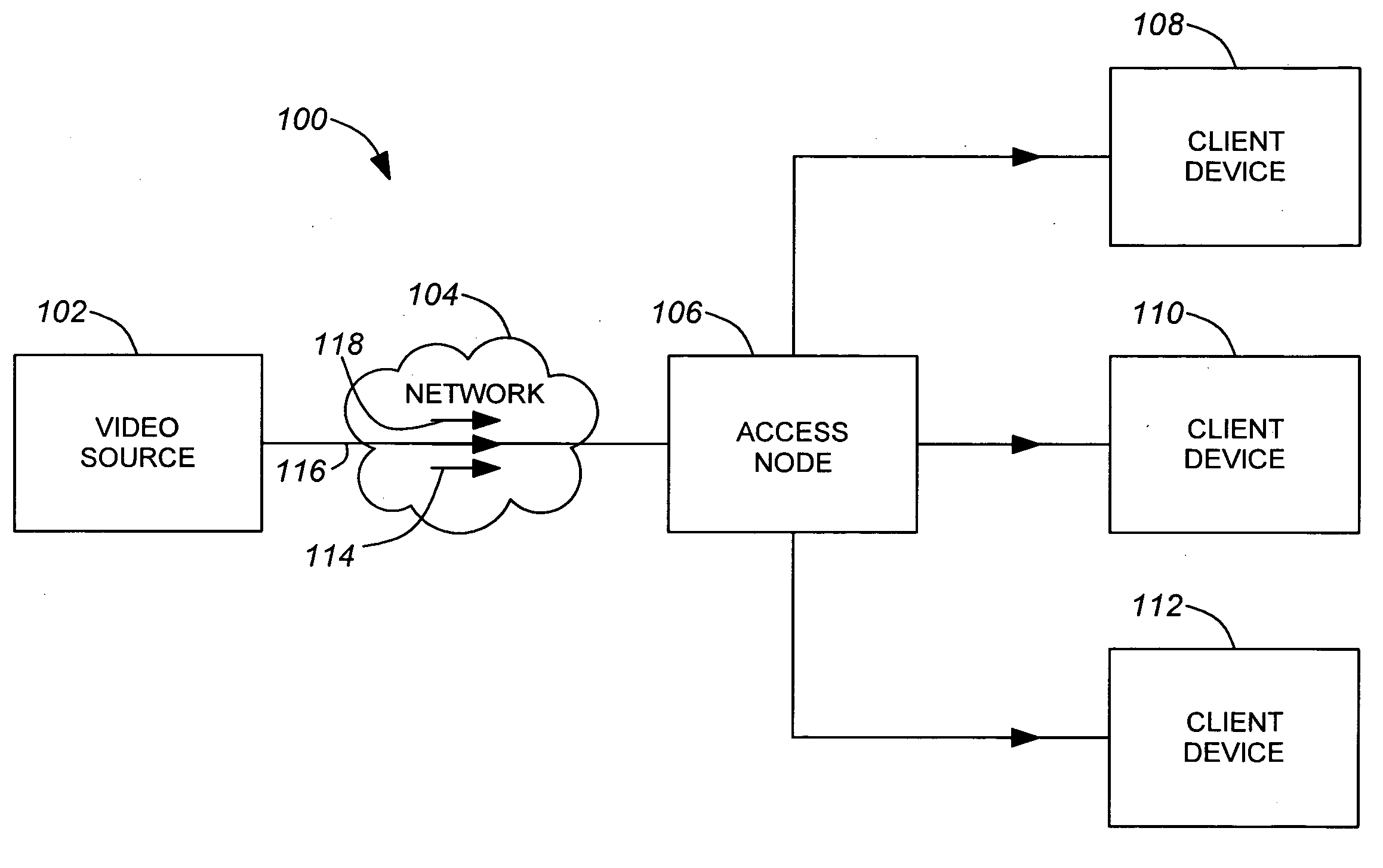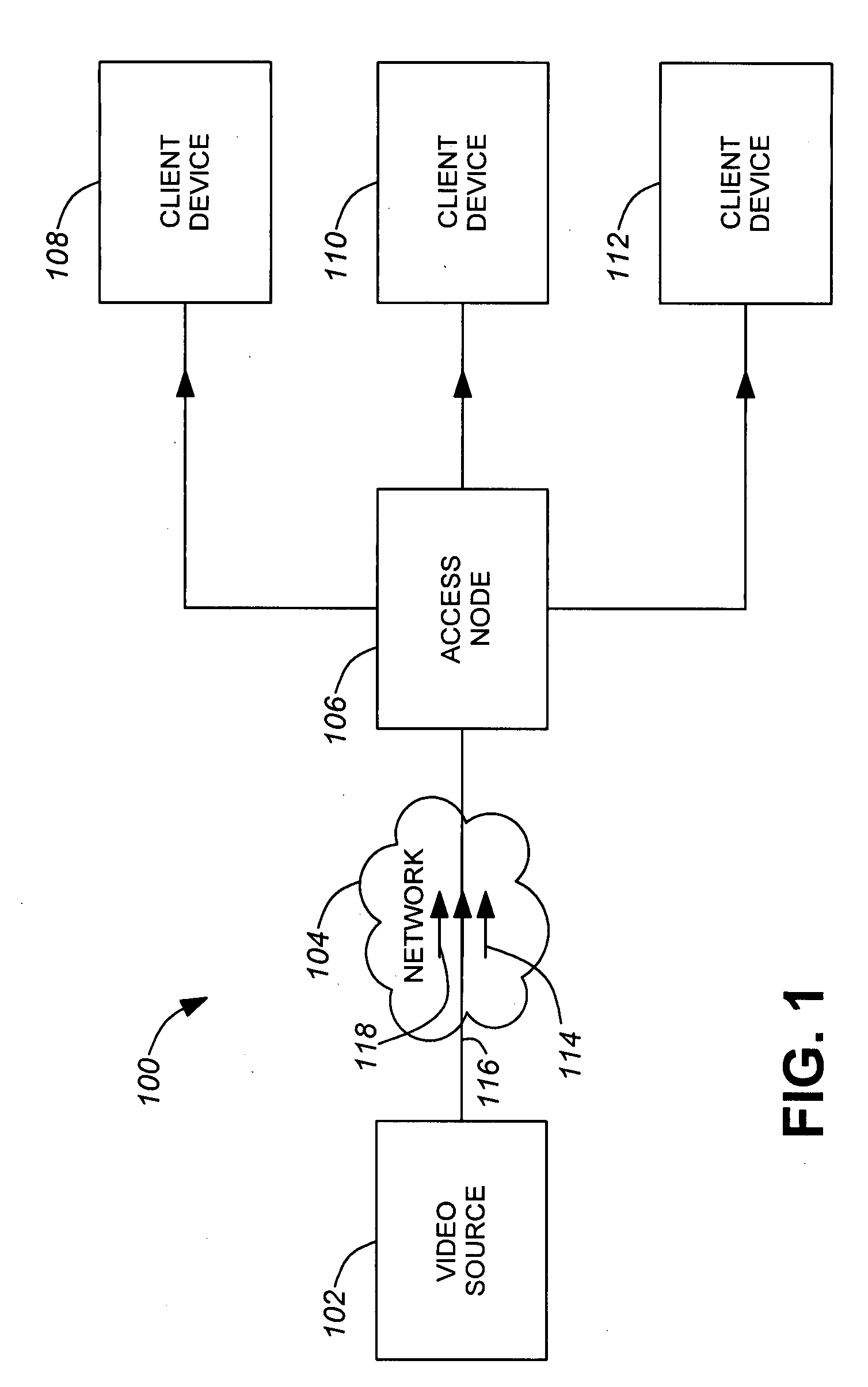System and method for efficient delivery of data content
- Summary
- Abstract
- Description
- Claims
- Application Information
AI Technical Summary
Benefits of technology
Problems solved by technology
Method used
Image
Examples
Embodiment Construction
[0028]Referring now to the drawings, in which like numerals refer to like components or steps, there are disclosed broad aspects of various exemplary embodiments. It should be apparent that various aspects disclosed in various figures can be combined such that various exemplary embodiments include aspects depicted in more than one of FIGS. 1-7.
[0029]MVOD is an abbreviation of “Multicast Video On Demand” and is a concept whereby content is multicast in a non-real time fashion across a network to a PC, set top box or other device with storage.
[0030]In various exemplary embodiments, once the content is available on the device, a user is notified of its availability and, upon request, the content is played from the device just as if it were a network based video on demand service.
[0031]In various exemplary embodiments, the MVOD application is made up of a client and server application. The server application creates stream definitions then distributes this information (and all data asso...
PUM
 Login to View More
Login to View More Abstract
Description
Claims
Application Information
 Login to View More
Login to View More - R&D
- Intellectual Property
- Life Sciences
- Materials
- Tech Scout
- Unparalleled Data Quality
- Higher Quality Content
- 60% Fewer Hallucinations
Browse by: Latest US Patents, China's latest patents, Technical Efficacy Thesaurus, Application Domain, Technology Topic, Popular Technical Reports.
© 2025 PatSnap. All rights reserved.Legal|Privacy policy|Modern Slavery Act Transparency Statement|Sitemap|About US| Contact US: help@patsnap.com



